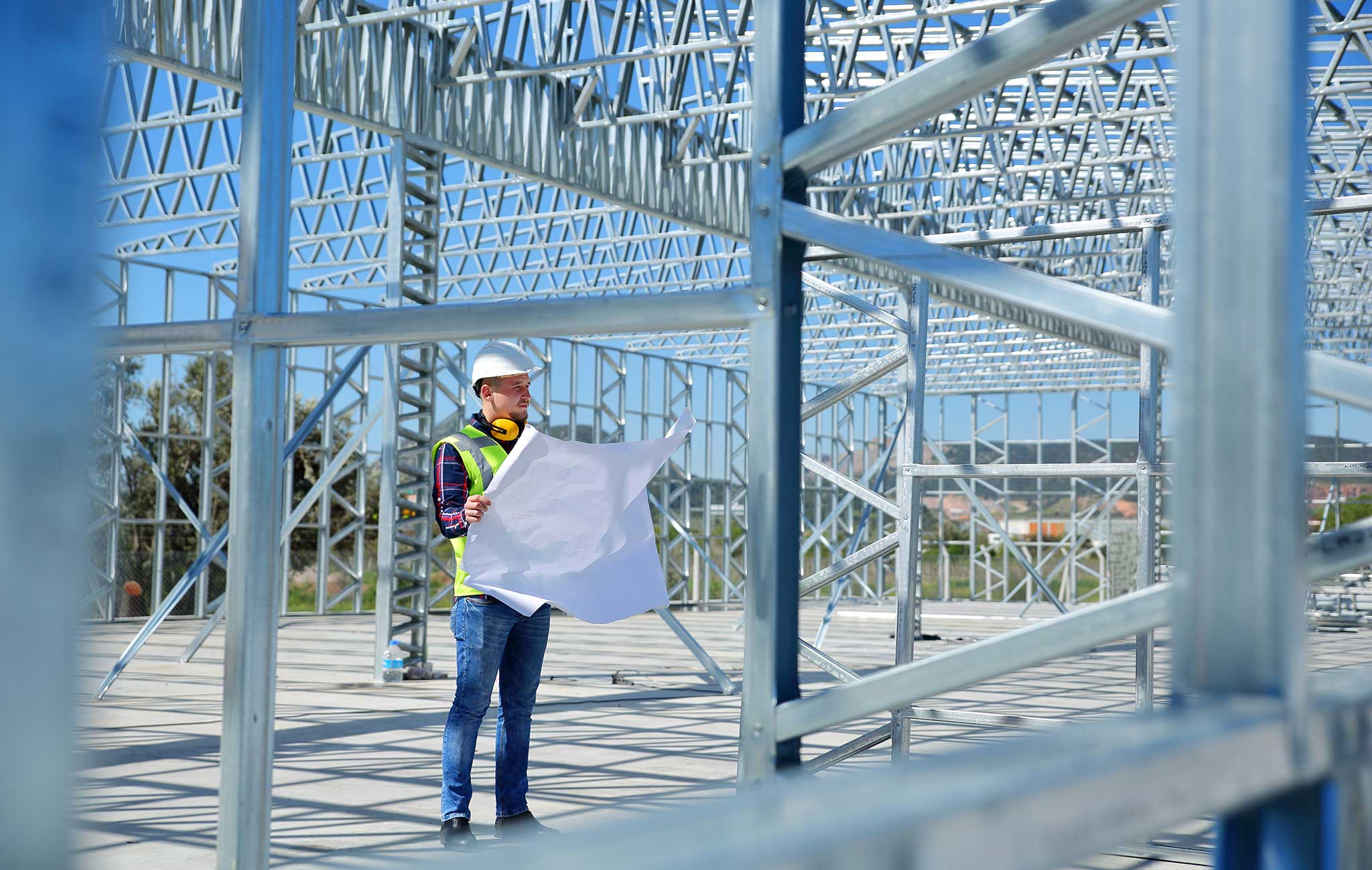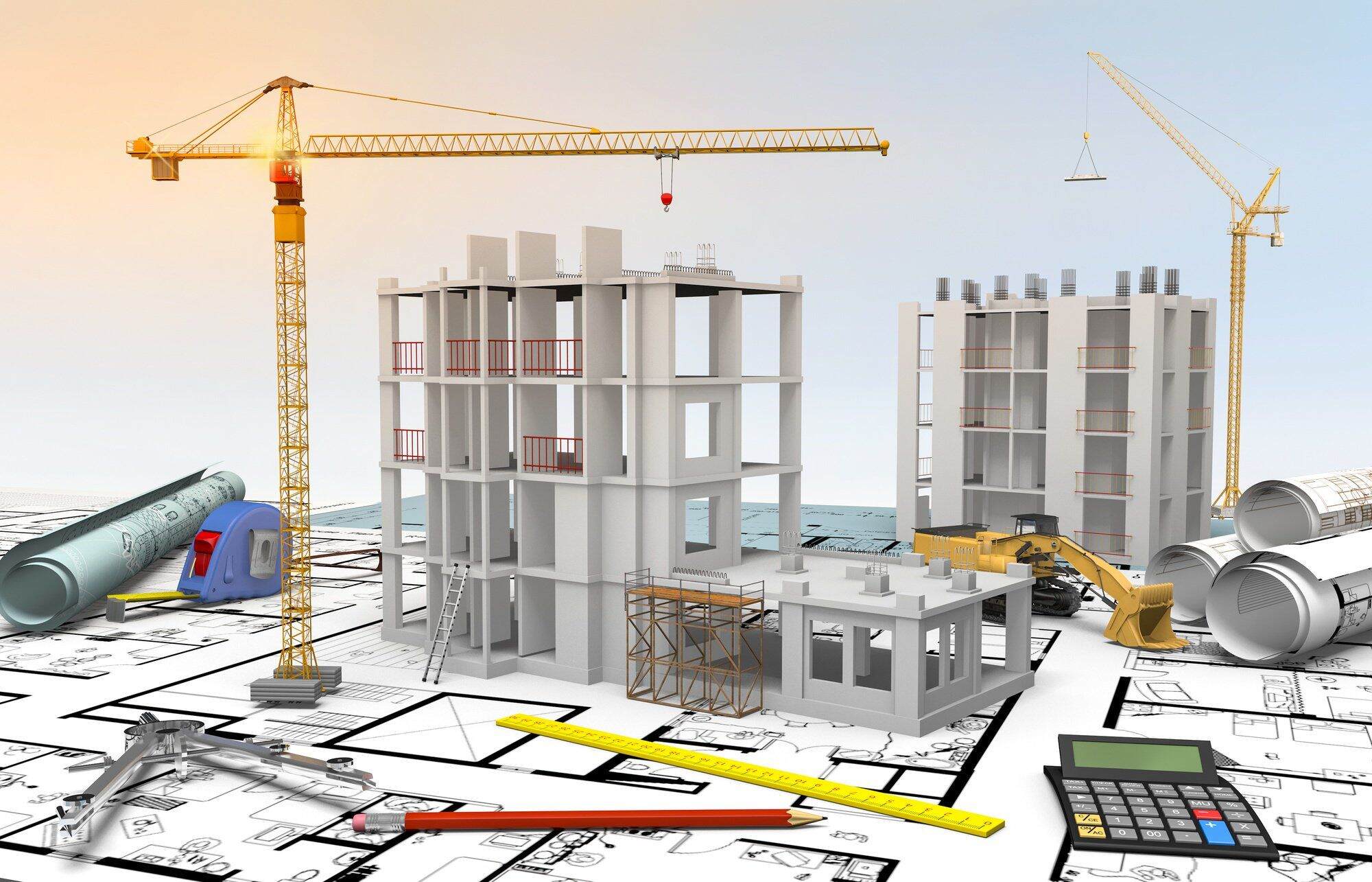Home>diy>Planning & Engineering>How Civil Engineering Affects The Environment


Planning & Engineering
How Civil Engineering Affects The Environment
Modified: January 4, 2024
Discover the impact of planning-engineering in the field of civil engineering on the environment. Explore the measures taken to minimize ecological footprint and ensure sustainable development.
(Many of the links in this article redirect to a specific reviewed product. Your purchase of these products through affiliate links helps to generate commission for Storables.com, at no extra cost. Learn more)
Introduction
Civil engineering plays a vital role in shaping our modern world. From designing and constructing infrastructure such as buildings, bridges, and roadways to developing sustainable solutions for urban planning, civil engineering is a field with significant impact. However, it’s important to recognize that these activities also have a profound effect on the environment.
As population growth and urbanization continue to accelerate, the demand for infrastructure and development increases. While these advancements bring numerous benefits to society, they also come at a cost to the natural environment. This article will explore how civil engineering affects the environment and highlight some sustainable solutions that can mitigate these negative impacts.
By understanding the environmental consequences of civil engineering, we can work towards balancing the needs of society with the preservation of our natural ecosystems.
Key Takeaways:
- Civil engineering’s impact on the environment includes deforestation, habitat loss, pollution, and energy consumption. Sustainable solutions, such as green building practices and innovative stormwater management, are crucial for minimizing these negative effects.
- By integrating sustainable practices, civil engineers can mitigate the environmental impact of their projects. Prioritizing preservation, implementing waste reduction strategies, and considering the life cycle impacts of projects are essential for creating a greener and more sustainable future.
Read more: What Is A Civil Engineering Technician
Deforestation and Land Clearing
Deforestation and land clearing are two significant environmental impacts of civil engineering projects. When constructing infrastructure, such as roads or buildings, large areas of land often need to be cleared. This process involves removing trees and vegetation, which not only alters the local ecosystem but also contributes to deforestation on a larger scale.
Deforestation has numerous implications for the environment. Trees play a crucial role in absorbing carbon dioxide and releasing oxygen through photosynthesis. By clearing forests, we reduce the Earth’s natural ability to mitigate climate change. Additionally, the loss of forests disrupts habitats for countless plant and animal species, leading to a loss of biodiversity and ecosystem balance.
Furthermore, deforestation and land clearing can lead to soil erosion. Without the protection of vegetation, soil becomes vulnerable to erosion by wind and water. This erosion can result in the loss of nutrient-rich topsoil, essential for supporting plant life.
To mitigate the impacts of deforestation and land clearing, civil engineers can adopt sustainable practices. For instance, they can prioritize locating infrastructure projects in already disturbed areas to minimize the need for extensive land clearing. Additionally, implementing reforestation initiatives and utilizing sustainable construction materials can help in the restoration and preservation of forests.
By considering the environmental consequences of deforestation and land clearing, civil engineers can work towards finding a balance between development and ecological preservation.
Construction and Habitat Loss
Construction activities associated with civil engineering projects often lead to the loss of natural habitats. When urban areas expand, natural ecosystems, such as forests and wetlands, are frequently cleared to make way for buildings, roads, and other infrastructure. This destruction of habitats can have severe consequences for local wildlife and ecosystems.
Habitat loss disrupts the delicate balance of ecosystems, causing the displacement and even extinction of certain plant and animal species. Many species rely on specific habitats for their survival, and when these habitats are destroyed, their populations decline or disappear entirely. The loss of biodiversity can have cascading effects on the ecosystem, impacting other species and disrupting natural processes.
To mitigate the impacts of habitat loss, civil engineers can incorporate measures that preserve and restore habitats. This includes implementing green infrastructure practices, such as incorporating green spaces and wildlife corridors into urban design. By maintaining and creating new habitats within urban environments, we can support biodiversity and promote a healthier coexistence between humans and wildlife.
Furthermore, engaging in rigorous environmental impact assessments before commencing construction projects can help identify sensitive habitats that need to be protected. By considering alternative design options and implementing mitigation measures, civil engineers can minimize the negative impact on local ecosystems and ensure sustainable development.
As civil engineering projects continue to shape our urban landscapes, it is crucial to prioritize the preservation and restoration of habitats to maintain ecological balance and preserve biodiversity.
Water and Air Pollution
Civil engineering projects can contribute to both water and air pollution, having detrimental effects on the environment and human health.
During the construction phase, activities such as excavation, grading, and paving can result in the release of sediment, chemicals, and pollutants into nearby water bodies. This runoff can contaminate rivers, lakes, and streams, negatively impacting aquatic ecosystems. Sedimentation can smother aquatic plants and animals, disrupt habitats, and impair water quality by reducing light penetration and oxygen levels.
To prevent and mitigate water pollution, civil engineers can implement erosion and sediment control measures such as silt fences, sediment basins, and vegetative buffers. Additionally, advanced stormwater management techniques, including the use of infiltration basins, retention ponds, and green infrastructure, can help capture and treat runoff before it enters water bodies.
Air pollution is another significant concern associated with civil engineering projects. Construction activities, such as excavation, demolition, and material transportation, often generate dust and emit pollutants into the air. These pollutants include particulate matter (PM), volatile organic compounds (VOCs), and nitrogen oxides (NOx), among others. When inhaled, these pollutants can have adverse effects on human health, as well as contribute to smog formation and climate change.
To minimize air pollution, civil engineers can implement dust control measures, such as covering construction sites and using water sprays to prevent dust from becoming airborne. Additionally, promoting the use of low-emission vehicles and equipment, implementing dust control regulations, and adopting sustainable construction practices can help reduce the impact of air pollution.
It is essential for civil engineers to prioritize the implementation of pollution prevention and control measures to safeguard both water and air quality. By adopting sustainable construction practices and utilizing innovative technologies, we can minimize the environmental impact of civil engineering projects and promote a healthier and cleaner environment.
Energy Consumption
Civil engineering projects are known for their high energy demands, which contribute to the depletion of natural resources and the emission of greenhouse gases. Energy consumption is a significant environmental concern in the field of civil engineering.
During the construction phase, energy is required for various activities such as excavation, material transportation, and machinery operation. Additionally, once infrastructure is completed, ongoing energy consumption is necessary for heating, cooling, lighting, and operation of buildings, roads, and other structures.
The reliance on non-renewable energy sources, such as fossil fuels, for meeting these energy demands has detrimental effects on the environment. The extraction and combustion of fossil fuels release greenhouse gases, contributing to climate change. Furthermore, the extraction process can cause habitat destruction, water pollution, and other environmental hazards.
To reduce energy consumption and mitigate its environmental impact, civil engineers can integrate energy-efficient design principles and sustainable technologies into their projects. This includes using renewable energy sources such as solar panels and wind turbines to power infrastructure, implementing energy-efficient building materials and systems, and optimizing project layouts for passive energy gains such as natural lighting and ventilation.
Moreover, promoting sustainable transportation practices and encouraging the use of public transportation, cycling, and walking can help reduce the energy consumed in transportation infrastructure.
By prioritizing energy efficiency and renewable energy sources, civil engineers can significantly reduce the carbon footprint of their projects and contribute to a more sustainable and resilient built environment.
Consider using sustainable materials and construction methods in civil engineering projects to minimize the environmental impact. This can include using recycled materials, reducing energy consumption, and implementing green infrastructure.
Read more: What Is Civil Engineering Major
Waste Generation and Management
Civil engineering projects generate a significant amount of waste, including construction debris, excavated materials, and demolition waste. Improper management of this waste can have harmful effects on the environment and human health.
The construction industry is known for its high levels of waste generation, contributing to landfill space depletion and resource depletion. Construction and demolition waste can consist of concrete, asphalt, wood, metals, and other materials that, if not properly managed, can contaminate soil and water sources.
To address waste generation, civil engineers can implement sustainable waste management practices. This includes promoting the reuse and recycling of materials, reducing waste generation through efficient design and construction techniques, and implementing proper onsite waste sorting and disposal protocols. By incorporating waste reduction strategies into project planning, civil engineers can minimize the environmental impact of their projects.
Furthermore, incorporating the principles of the circular economy can contribute to more sustainable waste management in civil engineering. This involves treating waste materials as valuable resources and finding ways to reuse or repurpose them. For example, concrete waste can be crushed and used as aggregate for new construction projects, reducing the need for virgin materials.
It is essential for civil engineers to prioritize waste management and seek innovative solutions to reduce waste generation and promote sustainable practices. By adopting a circular economy approach and integrating waste reduction strategies, we can minimize the environmental impact of construction projects and preserve valuable resources for future generations.
Climate Change Impact
Civil engineering activities have a significant impact on climate change, contributing to the increasing global temperatures and other adverse environmental effects. The construction and operation of infrastructure projects emit greenhouse gases (GHGs) that trap heat in the Earth’s atmosphere, leading to global warming and climate change.
The production of construction materials, such as concrete and steel, is energy-intensive and results in the release of carbon dioxide (CO2), a major greenhouse gas. Additionally, the energy consumed during the construction phase, as well as the ongoing operation of infrastructure, contribute to GHG emissions. These emissions not only contribute to climate change but also worsen air quality and have adverse health effects on humans and ecosystems.
Civil engineers play a crucial role in mitigating the impact of climate change by implementing sustainable design and construction practices. This includes utilizing low-carbon and recycled materials, adopting energy-efficient systems and technologies in buildings and transportation infrastructure, and promoting the use of renewable energy sources.
Furthermore, incorporating climate change considerations into project planning, such as evaluating the vulnerability of projects to climate-related hazards like flooding and extreme temperatures, can help ensure infrastructure resilience in the face of a changing climate.
By integrating climate change mitigation and adaptation strategies into civil engineering projects, we can minimize the contribution to GHG emissions, enhance resilience, and contribute to a more sustainable and climate-friendly built environment.
Sustainable Solutions in Civil Engineering
In response to the environmental challenges posed by civil engineering activities, the industry has been actively seeking sustainable solutions to minimize negative impacts and promote a more sustainable future.
One key approach is to promote green building practices. This includes implementing energy-efficient design principles, utilizing sustainable building materials, and incorporating renewable energy technologies. Green buildings not only reduce energy consumption and carbon emissions but also provide healthier and more comfortable indoor environments for occupants.
Another sustainable solution is the adoption of sustainable transportation systems. This includes designing and developing public transportation infrastructure to reduce private vehicle usage, promoting cycling and pedestrian-friendly infrastructure, and integrating smart mobility solutions. By encouraging sustainable transportation, civil engineers can help reduce congestion, air pollution, and carbon emissions.
Furthermore, implementing innovative stormwater management techniques can help mitigate the impact of urban development on water resources. This includes incorporating green infrastructure such as rain gardens, bioswales, and green roofs to capture and treat stormwater runoff, reducing the load on local waterways and preventing water pollution.
Integrating sustainable site design principles can also contribute to a more environmentally friendly approach. This involves preserving natural habitats, promoting biodiversity, and optimizing site development to minimize land disturbance and reduce the need for extensive land clearing.
Lastly, the concept of life cycle assessment (LCA) is gaining traction in civil engineering. LCA considers the environmental impacts of a project from cradle to grave, including the extraction of raw materials, production, construction, operation, and eventual demolition. By quantifying and assessing the environmental impacts throughout the lifecycle of a project, civil engineers can identify areas for improvement and make informed decisions to minimize the overall environmental footprint.
Overall, sustainable solutions in civil engineering require a holistic approach, considering environmental, social, and economic factors. By integrating sustainable practices into design, construction, and operation, civil engineers can contribute towards a greener and more sustainable future.
Conclusion
Civil engineering plays a crucial role in shaping the physical environment we live in. However, it is important to acknowledge that these activities have significant impacts on the natural environment. From deforestation and habitat loss to water and air pollution, energy consumption, waste generation, and climate change, civil engineering has a complex relationship with the environment.
Nevertheless, the field of civil engineering is evolving, and sustainable solutions are being actively pursued. By incorporating green building practices, promoting sustainable transportation systems, implementing innovative stormwater management techniques, integrating sustainable site design principles, and considering the life cycle impacts of projects, civil engineers can make significant strides towards mitigating these negative impacts.
Through sustainable practices, civil engineers can reduce deforestation and habitat loss by prioritizing the preservation and restoration of ecosystems. They can mitigate water and air pollution by implementing erosion and sediment control measures and adopting dust control technologies. By promoting energy-efficient design, utilizing renewable energy sources, and reducing overall energy consumption, civil engineers can address the climate change impact of their projects. Additionally, by implementing waste reduction strategies, promoting recycling and reuse, and incorporating circular economy principles, civil engineers can minimize waste generation and contribute to a more sustainable future.
It is crucial for civil engineers to recognize the environmental consequences of their work and proactively seek sustainable solutions. By integrating environmental considerations into the planning, design, construction, and operation of projects, civil engineers can strike a balance between development and ecological preservation.
In conclusion, civil engineering has a profound impact on the environment. However, by embracing sustainable practices and adopting innovative solutions, civil engineers can minimize these negative impacts and create a built environment that harmonizes with nature. By prioritizing sustainability, civil engineers can pave the way for a greener, more resilient, and environmentally friendly future.
Frequently Asked Questions about How Civil Engineering Affects The Environment
Was this page helpful?
At Storables.com, we guarantee accurate and reliable information. Our content, validated by Expert Board Contributors, is crafted following stringent Editorial Policies. We're committed to providing you with well-researched, expert-backed insights for all your informational needs.















0 thoughts on “How Civil Engineering Affects The Environment”